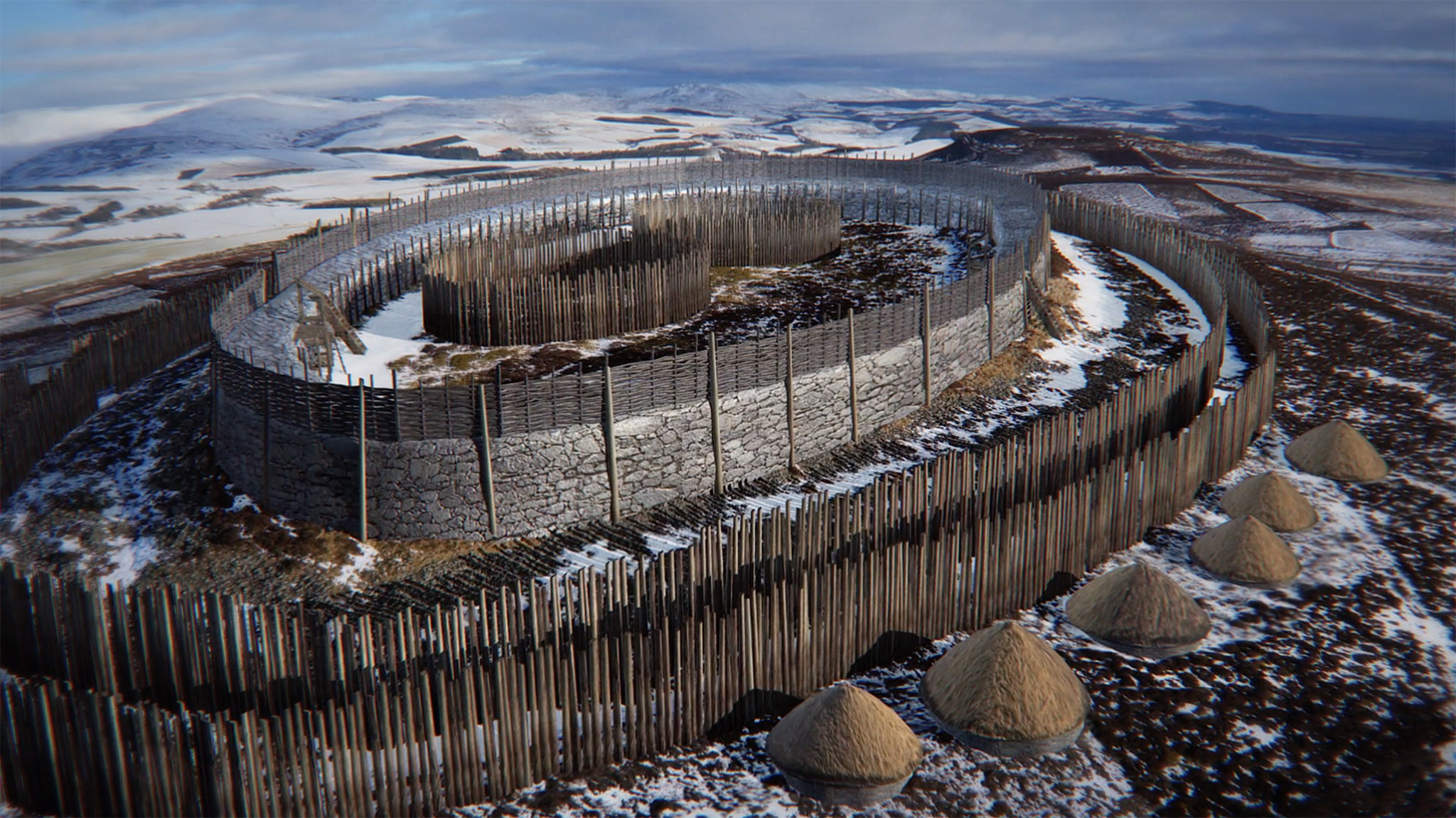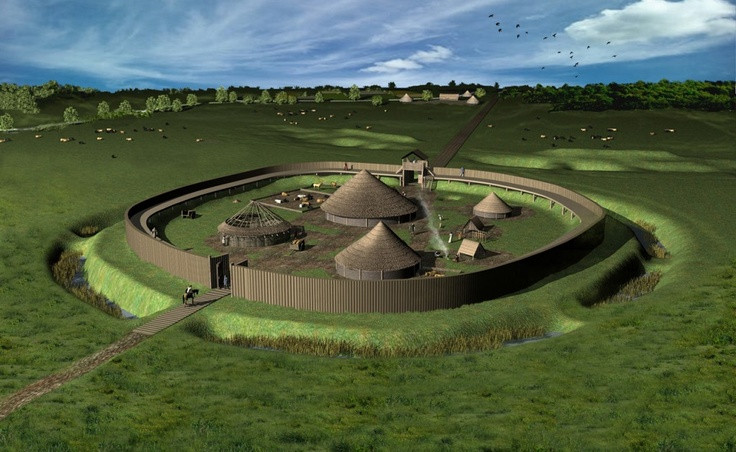They have been excavating a site near Nesscliffe in Shropshire and found a circle of worn stone surrounded by post holes.
Dr Paul Reilly, from the University of Southampton, said it suggested people had been regularly walking around something.
He said information boards would be put up to explain their finds and Historic England had called their discovery "spectacular".
A team of amateur and professional archaeologists carried out five examinations of the hillfort site which is believed to have been created about 500 BC.
The latest visit will be their last and Dr Reilly, a research fellow at the university, said they would spend another week completing their searches.
That will include a search for more post holes.
They believed the shrine was created during the Roman occupation of Britain, between the first and fourth centuries, based on pottery fragments found nearby.
Post holes of various sizes appeared to have been cut into the bed-rock
Catherine Wood said she had enjoyed being part of the archaeology team
Catherine Wood, a volunteer archaeologist from nearby Great Ness, said they had discovered post holes - holes carved out to hold the bottom of a wooden post - of different sizes, suggesting a structure once stood over the shrine.
"We don't yet know yet what sort of structures they were, it's all a bit of a quiz over here at the moment," she said.
Ms Wood moved to the area three years ago and said: "I've always wanted to get involved in archaeology."
"It's been such a great experience, I've learned so much."
She said the excitement really hit her when she was clearing some ramparts.
"I was just kneeling there thinking the last person to be in that space was over two-and-a-half thousand years ago when they built it and to me that's just mind-blowing," she said.
The archaeologists are coming to the end of a series of digs at the site
He also said 3D reconstructions could be created and any objects found would be returned to the county and given to the Shrewsbury Museum in a couple of years.
The Significance of the Discovery
The discovery of the Roman shrine in the heart of the Iron Age hillfort holds immense historical and archaeological significance. It offers a unique glimpse into the complex interactions between different cultures in ancient Britain. The presence of the shrine, dating back to the Roman occupation, suggests that the hillfort remained a significant site even after the Iron Age. The fact that the shrine was built within the existing hillfort structure points to the possibility of adaptation and continuity across different eras. This discovery can further our understanding of how Roman influence interacted with existing local traditions and cultures.
Unraveling the Past: The Significance of the Post Holes
The discovery of post holes around the worn stone circle provides crucial evidence for the existence of a structure that once stood over the shrine. The varying sizes of the post holes suggest that the structure was potentially elaborate, possibly a roofed building or a ceremonial enclosure. This finding adds a layer of intrigue to the site, raising questions about its purpose and function. Further investigation and analysis of the post holes will be crucial in deciphering the structure's purpose and its relationship to the shrine.
The Shrine and its Potential Significance
The identification of the shrine within the Iron Age hillfort is a compelling discovery. While the specific function of the shrine remains a mystery, it is likely that it served a religious or ceremonial purpose for the Romans who occupied the area. The presence of pottery fragments near the shrine suggests that it was a site of activity and importance. Further research and analysis of the pottery will be crucial in determining the nature of the rituals or practices that took place at the shrine.
A Window into the Past: Examining the Pottery Fragments
The discovery of pottery fragments near the shrine provides valuable clues about its age and potential use. The presence of Roman-era pottery suggests that the shrine was constructed during the Roman occupation of Britain, between the 1st and 4th centuries AD. The specific types of pottery found could further reveal information about the cultural context of the shrine, including the origins of the pottery and the nature of trade networks in the region.
The Future of the Discovery
The discovery of the Roman shrine in the Iron Age hillfort is a testament to the rich history of Shropshire. The archaeological team's dedication and the efforts of volunteers like Catherine Wood have brought to light this fascinating piece of the past. The future of the discovery is promising, with plans for artistic representations and 3D reconstructions to bring the site to life. The objects found at the site will be returned to the county and displayed at the Shrewsbury Museum, making this discovery accessible to the public and inspiring further research and understanding of our shared heritage.


















